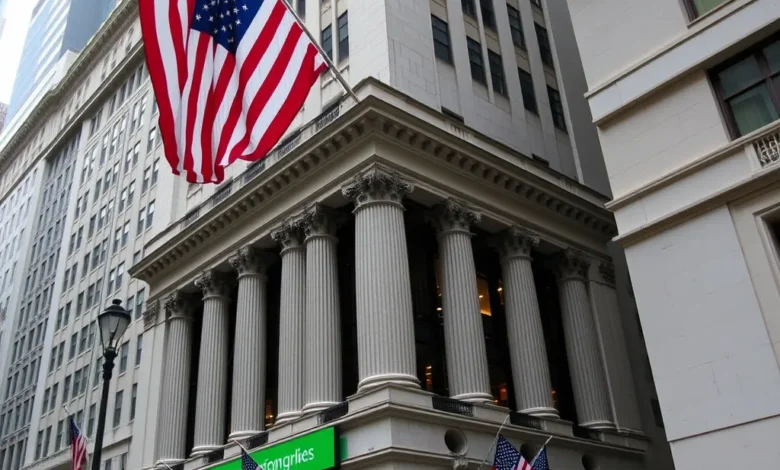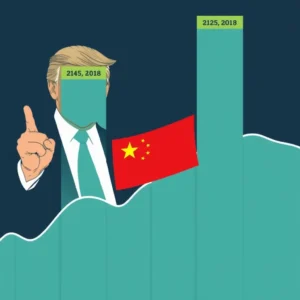America’s Incredible Stock Market Rebound: How Wall Street Defied Expectations

In the spring of 2025, few would have predicted the remarkable turnaround that would soon unfold on Wall Street. After a sharp plunge that nearly pushed stocks into bear market territory, the U.S. stock market has not only rebounded but surged to new all-time highs, confounding experts and investors alike. This extraordinary comeback is a testament to the market’s resilience, the power of innovation, and the dynamic forces shaping the American economy.
A Tumultuous Start: Trade Wars and Uncertainty
The year began with optimism, as the S&P 500 and other major indices reached record highs. However, this momentum was abruptly halted in March and April when President Donald Trump announced a sweeping series of tariffs on key trading partners, including China, the European Union, and Canada. The so-called “Liberation Day” tariffs sent shockwaves through the markets, with some tariffs on Chinese goods soaring above 145%, effectively disrupting global supply chains and stoking fears of a renewed trade war.
However, this momentum was abruptly halted in March and April when President Donald Trump announced a sweeping series of tariffs on key trading partners, including China, the European Union, and Canada. The so-called “Liberation Day” tariffs sent shockwaves through the markets, with some tariffs on Chinese goods soaring above 145%, effectively disrupting global supply chains and stoking fears of a renewed trade war.
As a result, the S&P 500 tumbled nearly 20% from its February peak, and investor sentiment soured. Worries about inflation, higher consumer prices, and the potential for an economic downturn dominated headlines. The Dow Jones Industrial Average and Nasdaq also suffered steep declines, and Wall Street braced for a prolonged period of volatility.
A Swift Policy Pivot and Renewed Optimism
The turning point came in early April. Responding to mounting pressure from financial markets and business leaders, the administration announced a 90-day halt on the most aggressive tariffs. This move, coupled with the start of new trade negotiations with China and the United Kingdom, began to restore confidence. Investors grew hopeful that the worst of the trade tensions were behind them and that new agreements would stabilize the economic outlook.
By mid-May, the S&P 500 was climbing again, posting its best monthly gain in years. The rebound was further fueled by breakthroughs in trade talks, including China’s decision to reopen its rare earth market to the U.S. and the announcement of frameworks for future agreements. These developments reassured investors that the risk of a full-blown trade war was receding.
The Power of Innovation: AI and Tech Lead the Charge
While trade policy dominated the headlines, another powerful force was quietly driving the market’s recovery: the explosive growth of artificial intelligence and technology stocks. Companies like Nvidia, whose advanced chips power the latest AI applications, saw soaring sales and investor enthusiasm. The AI boom became a key driver of stock performance, helping the Nasdaq and S&P 500 recover and then surpass their previous highs.
The AI boom became a key driver of stock performance, helping the Nasdaq and S&P 500 recover and then surpass their previous highs.
The Republican-led push for deregulation also played a role, as it encouraged investment in high-growth sectors and signaled a business-friendly environment. Investors began to focus less on trade worries and more on the potential for technological innovation to fuel economic expansion.
Broad-Based Gains and Investor Confidence
The market’s comeback was not limited to a handful of tech giants. Nearly every sector within the S&P 500 participated in the rally, from consumer goods to industrials. Even companies facing direct tariff impacts, like Nike, managed to post significant gains, buoyed by strong earnings and resilient consumer demand.
By late June, the S&P 500 and Nasdaq had reached new all-time highs, with the Dow Jones close behind. The speed of the recovery was remarkable—what typically takes a year or more happened in just a few months. Analysts marveled at the market’s ability to “look forward,” discounting present risks in favor of future opportunities.
The Role of the Federal Reserve and Economic Fundamentals
Throughout this period, the Federal Reserve played a stabilizing role. While it refrained from cutting interest rates immediately, the prospect of a future rate cut, combined with steady economic data and low inflation, provided a supportive backdrop for stocks. The central bank’s measured approach reassured investors that monetary policy would remain flexible and responsive to changing conditions.
interest rates immediately, the prospect of a future rate cut, combined with steady economic data and low inflation, provided a supportive backdrop for stocks. The central bank’s measured approach reassured investors that monetary policy would remain flexible and responsive to changing conditions.
Despite the market’s strength, some caution remains. Consumer confidence has lagged behind stock gains, and there are ongoing concerns about the long-term effects of tariffs, geopolitical tensions, and potential inflation. Yet, the market’s resilience has given many investors reason to believe that the American economy can weather these storms.
Looking Ahead: Lessons from the Rebound
America’s incredible stock market rebound in 2025 is a story of adaptability and optimism. It highlights the importance of policy flexibility, the transformative power of innovation, and the enduring appeal of U.S. markets for global investors. While risks remain, the swift recovery has demonstrated that even in the face of uncertainty, Wall Street can defy expectations and chart a path to new heights.
For companies and investors alike, the lesson is clear: stay agile, embrace innovation, and keep an eye on the long-term horizon. The future, as the market has shown, is often brighter than the headlines suggest.




